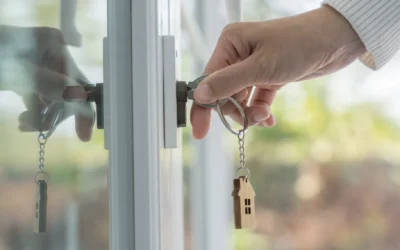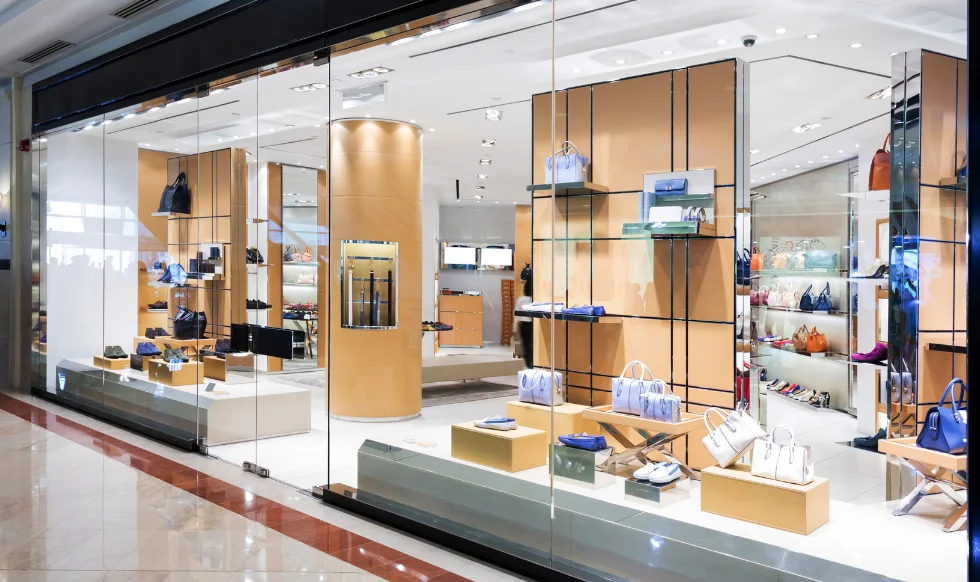Introduction
Amusement parks are a source of joy and excitement, offering thrilling rides and unforgettable memories. But behind the laughter and adrenaline, there’s a lesser-known reality: accidents can and do happen. From minor scrapes to serious injuries, the risk is part of the experience many don’t anticipate.
Adding to this complexity is the fine print—liability waivers. Often hidden in ticket terms or signage, these waivers aim to protect parks from legal responsibility for accidents. But what happens when an injury occurs, and the victim feels the park’s negligence played a role? Can a simple waiver truly absolve them of accountability?
If you or someone you care about has been injured at an amusement park, understanding the implications of liability waivers and your legal options is crucial. This guide will help demystify the topic, offering clarity and support in navigating these challenging situations.
Hurt Aid is here to help you connect with trusted attorneys and resources to explore your rights. Whether you’re seeking justice for yourself or researching for a loved one, this blog will provide the insights you need to move forward confidently.
What Are Liability Waivers?
Liability waivers are legal agreements designed to limit a company’s responsibility for injuries or accidents that may occur during their services or activities. In the context of amusement parks, these waivers often come embedded in the fine print of your ticket, posted on signs at entrances, or even acknowledged during online booking.
By accepting these terms, you’re essentially agreeing not to hold the park liable for injuries sustained under ordinary circumstances. For instance, if you trip while walking through the park or experience a mild jolt on a ride, the waiver may shield the park from legal action.
Why Do Parks Use Them?
Amusement parks are inherently risky environments, filled with fast-moving rides, large crowds, and potential hazards. Liability waivers serve as a protective measure, helping parks manage the legal risks associated with injuries. They aim to discourage lawsuits over minor accidents, keeping operating costs lower and ensuring parks remain accessible to the public.
However, while liability waivers are common, they aren’t absolute. If you or someone you love has been hurt at an amusement park, it’s important to understand that these waivers have limits and exceptions, which we’ll explore in the next section.
By taking the time to read and understand these agreements, you’ll be better prepared to protect your rights and know when to take action if an injury occurs.
Are Liability Waivers Always Enforceable?
While liability waivers are a common tool used by amusement parks to limit their legal exposure, they are not always enforceable. Courts carefully examine the specifics of each case to determine whether a waiver should shield the park from liability. Let’s break down the key factors that can influence enforceability:
1. Clarity and Visibility
For a waiver to hold up in court, it must be clearly written and easy to understand. The language should leave no doubt that the signer is waiving their right to sue in the event of an injury. Waivers buried in fine print, hidden on the back of a ticket, or written in overly complex legal jargon are more likely to be challenged successfully.
Additionally, the waiver must be reasonably presented to the participant. If the terms were difficult to find or acknowledge—such as being displayed only on an obscure sign at the park entrance—this may weaken the park’s defense.
2. Gross Negligence or Recklessness
Liability waivers cannot protect amusement parks from lawsuits involving gross negligence or recklessness. For example, if an injury occurs because the park failed to maintain its rides properly or ignored clear safety concerns, the waiver may not apply. Victims in such cases can argue that the park’s actions—or lack thereof—exceeded the scope of what a waiver can legally cover.
3. Unconscionability
A waiver may be deemed unenforceable if it is considered “unconscionable,” meaning it is excessively unfair or one-sided. For instance, if the waiver demands the participant give up all rights without offering any clear protections or assurances in return, a court may strike it down.
4. State Laws and Public Policy
The enforceability of liability waivers can also vary depending on state laws and public policy. Some states have stricter rules about the types of rights individuals can waive, especially if public safety is a concern. For example, a waiver that attempts to release a park from responsibility for a child’s injury may be invalid in certain jurisdictions.
Example Case: When a Waiver Was Overturned
Consider a case where a ride malfunctioned due to poor maintenance, causing significant injuries. The injured party had signed a waiver upon entry. Despite the waiver, the court ruled that the park’s gross negligence rendered the waiver unenforceable. The park was held accountable for failing to provide a reasonably safe environment.
Understanding these nuances can make all the difference if you or someone you know is injured at an amusement park. Liability waivers may create barriers, but they are not the end of the story. In many cases, victims can still pursue justice and compensation.
Next, we’ll explore the common causes of amusement park accidents and how they might impact your legal rights.
Common Causes of Amusement Park Accidents
Amusement parks are designed to offer thrilling experiences, but these environments also come with unique risks. Understanding the common causes of accidents can help you identify whether negligence played a role in your situation.
1. Mechanical Failures
Mechanical issues are among the most common causes of amusement park accidents. These can range from ride malfunctions due to faulty equipment to structural failures caused by inadequate maintenance. For example:
- A roller coaster’s safety harness fails to lock securely.
- A ride unexpectedly stops mid-operation because of electrical faults.
In such cases, the park may be held liable if it failed to inspect or maintain its equipment properly.
2. Operator Error
Ride operators have a significant responsibility to ensure guest safety. Errors such as improperly securing riders, failing to follow safety protocols, or operating a ride under unsafe conditions can lead to accidents.
Examples include:
- An operator starting a ride before all passengers are secured.
- Failing to address visible safety concerns, such as loose cables or improperly aligned tracks.
3. Environmental Hazards
Hazards around the park itself—beyond the rides—can also lead to accidents. Common examples include:
- Slippery walkways due to spills or inadequate drainage.
- Poor lighting in high-traffic areas, causing trip-and-fall incidents.
- Unsecured construction zones or maintenance areas accessible to guests.
4. Rider Behavior
Not all accidents are the park’s fault. Visitors who ignore safety instructions, fail to adhere to ride restrictions, or engage in reckless behavior may contribute to their injuries. For instance:
- Standing up during a ride despite clear warnings to remain seated.
- Ignoring height, weight, or health restrictions for certain rides.
5. Acts of Nature
Weather conditions like sudden storms, high winds, or extreme heat can also create dangerous situations. Parks are responsible for taking reasonable precautions to mitigate these risks, such as shutting down rides during adverse weather.
Identifying Liability
If you or a loved one has been injured at an amusement park, understanding the cause of the accident is a critical first step in determining liability. Was the park negligent in maintaining a safe environment? Did an operator fail to follow safety protocols? Or were external factors beyond anyone’s control at play?
By gathering evidence and analyzing the circumstances, an experienced attorney can help you uncover the answers and determine whether you have grounds for a legal claim.
In the next section, we’ll explore your legal rights and the options available to seek justice and compensation after an amusement park accident.
Legal Rights and Options for Injury Victims
If you or someone you care about has been injured at an amusement park, understanding your legal rights is crucial. While liability waivers may seem like an insurmountable barrier, they are not absolute. In many cases, victims can still pursue compensation for their injuries. Here’s what you need to know:
1. Determining Liability
The first step in any legal claim is determining who is responsible for the injury. In amusement park accidents, liability may rest with:
- The park operator: For failing to maintain rides, enforce safety measures, or address known hazards.
- Ride manufacturers: If a defect in the ride’s design or manufacturing contributed to the accident.
- Third-party contractors: If vendors, maintenance crews, or other third parties were negligent.
An attorney can help investigate the circumstances of the accident and identify all potentially liable parties.
2. Challenging Liability Waivers
Liability waivers may protect amusement parks from some lawsuits, but they often have legal limits. Here are common ways attorneys challenge these waivers:
- Proving gross negligence: Demonstrating that the park’s actions went beyond ordinary carelessness and were reckless or egregious.
- Highlighting unclear language: If the waiver was difficult to understand or not clearly presented, it may be invalidated.
- Citing public policy: Some states limit the enforceability of waivers that attempt to absolve businesses of significant safety responsibilities.
3. Compensation Options
Victims of amusement park accidents may be entitled to various forms of compensation, including:
- Medical expenses: Covering hospital bills, surgeries, rehabilitation, and ongoing care.
- Lost wages: Compensation for time missed from work due to the injury.
- Pain and suffering: Financial acknowledgment of the emotional and physical distress caused by the accident.
- Punitive damages: In cases of gross negligence, courts may award additional damages to punish the responsible party.
4. Importance of Legal Representation
Navigating the legal landscape after an amusement park accident can be overwhelming, especially when dealing with liability waivers and large corporations. An experienced personal injury attorney can:
- Assess the strength of your claim.
- Gather and present evidence to support your case.
- Negotiate with the park’s insurance company or legal team.
Taking Action
If you’ve been injured, it’s essential to act promptly. Deadlines for filing claims, known as statutes of limitations, vary by state. Delaying action could jeopardize your ability to seek compensation.
Understanding your rights and options is empowering. By seeking legal guidance, you can take the necessary steps to hold negligent parties accountable and secure the financial support needed for recovery.
Next, we’ll outline the practical steps to take immediately after an amusement park accident to protect your rights and build a strong case.

Steps to Take After an Amusement Park Accident
In the aftermath of an amusement park accident, your immediate actions can significantly impact your ability to seek compensation and justice. Whether you’re the victim or assisting someone who has been injured, these steps will help protect your rights and strengthen your case:
1. Seek Medical Attention
Your health and safety should always be the top priority. Even if injuries appear minor, seek medical attention promptly. Some injuries, such as concussions or internal damage, may not be immediately apparent.
- Visit an on-site first aid station, if available.
- Follow up with a healthcare provider for a thorough evaluation.
Documenting your injuries through medical records is critical for establishing a connection between the accident and your claim.
2. Report the Incident
Notify park staff or management immediately. Most parks have procedures for documenting accidents, which may include incident reports or witness accounts.
- Request a copy of the report for your records.
- Note the names and contact details of any staff involved in handling your case.
3. Gather Evidence
Collecting evidence at the scene is vital for building a strong case. Key evidence includes:
- Photos and videos: Capture the accident site, any visible hazards, and your injuries.
- Witness statements: Get contact information from anyone who saw the incident.
- Ride details: Note the ride’s name, location, and any safety warnings or instructions.
The more evidence you can collect, the stronger your claim will be.
4. Retain All Documents
Keep all documents related to your visit, including:
- Tickets and receipts (these often contain liability waiver language).
- Medical bills and records.
- Correspondence with the park or its representatives.
These documents will help establish the timeline and financial impact of your injury.
5. Avoid Speaking About the Incident Publicly
Refrain from discussing the accident on social media or with anyone other than your attorney. Statements made online or to third parties can be used against you in legal proceedings.
6. Contact an Experienced Attorney
An attorney specializing in personal injury cases can evaluate your situation, explain your rights, and guide you through the legal process. They can also help you navigate the complexities of liability waivers and determine whether the park’s negligence played a role in the accident.
Why These Steps Matter
Taking these steps promptly ensures you have a solid foundation for your claim. Documentation, evidence, and professional guidance are essential when challenging liability waivers or seeking compensation for your injuries.
Next, we’ll discuss how Hurt Aid supports victims and connects them with trusted attorneys to help them move forward after an amusement park accident.
Preventing Accidents: Tips for Amusement Park Visitors
While amusement parks work to create a safe and enjoyable environment, accidents can happen. As a visitor, there are steps you can take to minimize risks and prioritize safety for yourself and your loved ones.
1. Follow All Posted Rules and Guidelines
Every ride has specific instructions designed to ensure safety. Always:
- Read and follow height, weight, and health restrictions.
- Obey safety warnings, such as remaining seated or keeping hands inside the ride.
Ignoring these rules can put you and others at risk.
2. Pay Attention to Park Announcements
Parks often provide updates about weather conditions, ride closures, or other safety concerns through announcements or signage. Staying informed can help you avoid potentially dangerous situations.
3. Be Aware of Physical Limitations
Some rides can be strenuous or unsafe for individuals with certain medical conditions. If you have heart problems, back issues, or are pregnant, consult a healthcare professional before visiting the park.
4. Supervise Children Closely
Children may not fully understand or adhere to safety rules. As a parent or guardian:
- Ensure they meet the height or age requirements for rides.
- Teach them to listen to ride operators and follow park rules.
- Accompany them on rides when necessary.
5. Stay Hydrated and Rested
Long days at amusement parks can lead to fatigue and dehydration, which may increase the likelihood of accidents.
- Drink water regularly.
- Take breaks to rest, especially in hot weather.
6. Inspect Rides Before Boarding
While parks conduct regular maintenance, it doesn’t hurt to observe:
- Ride operators’ professionalism and adherence to safety checks.
- The condition of ride equipment, such as harnesses and seat belts.
If something seems unsafe, report it to park staff and consider skipping that ride.
7. Research the Park’s Safety Record
Before visiting, look into the park’s safety reputation. Check for reviews or news about recent accidents, and choose parks with a solid track record of prioritizing safety.
8. Know Where to Seek Help
Familiarize yourself with the locations of first aid stations and emergency exits. In the event of an accident, quick access to assistance can make all the difference.
Conclusion
Amusement parks offer excitement, laughter, and unforgettable memories, but accidents can cast a shadow on what should be a joyous experience. Liability waivers, while common, are not absolute barriers to justice. Whether an injury stems from mechanical failures, operator error, or environmental hazards, victims and their families have rights that should not be overlooked.
If you or someone you care about has been injured at an amusement park, understanding the nuances of liability waivers, gathering evidence, and taking the appropriate steps are crucial. Acting promptly can make the difference between securing compensation and facing mounting medical bills and other losses without support.
Navigating these challenges can feel overwhelming, but you don’t have to do it alone. Hurt Aid is here to connect you with trusted attorneys and provide resources that clarify your rights and options. Whether you’re seeking justice for yourself or helping a loved one, our platform is designed to support you every step of the way.
Don’t let uncertainty hold you back—reach out to Hurt Aid today to explore your legal options and take the first step toward recovery and justice.





